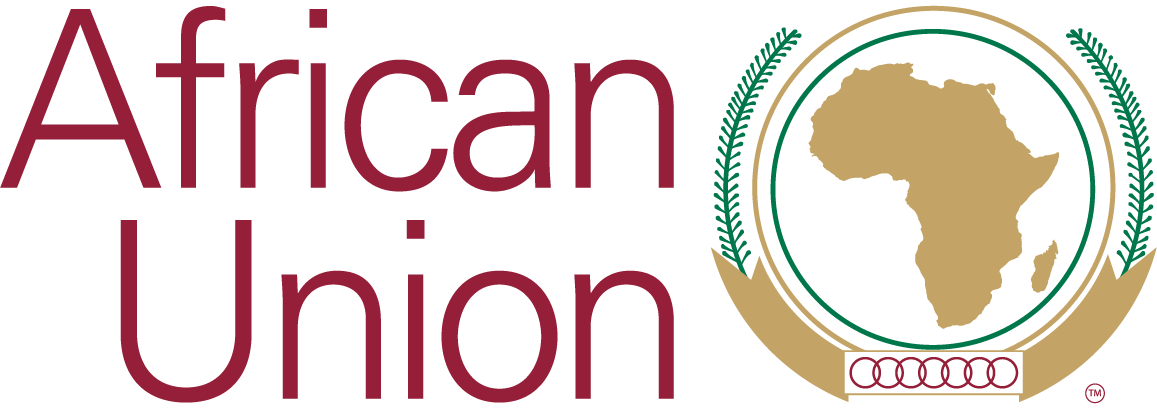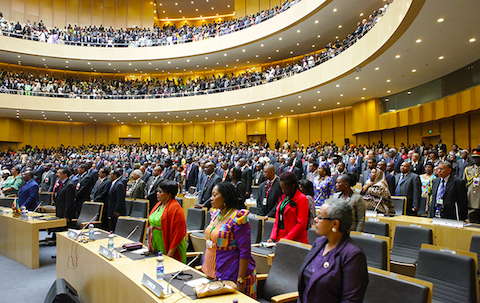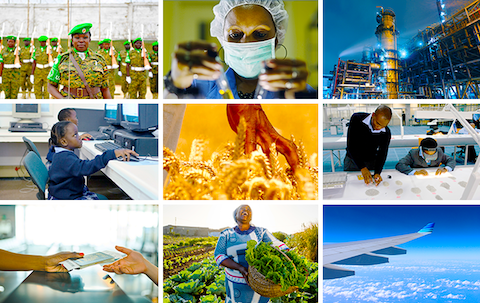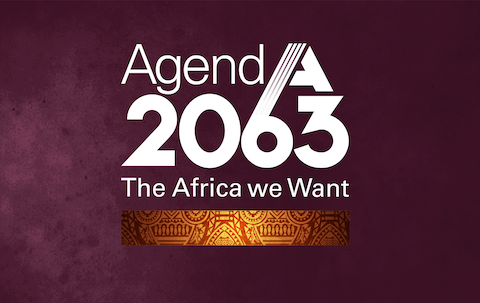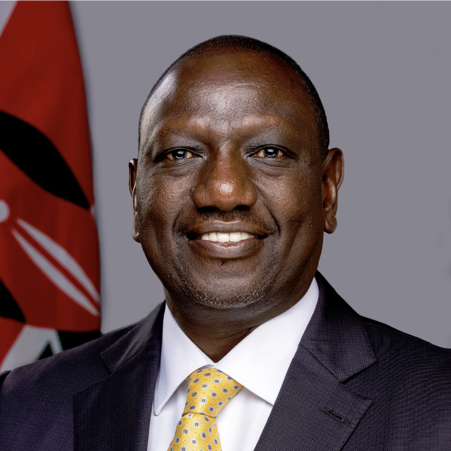Address by the Chairperson of the African Union Commission, H.E. Dr. Dlamini Zuma to the Third Pan African Parliament
Address by the Chairperson of the African Union Commission, H.E. Dr. Dlamini Zuma to the Third Pan African Parliament
STATE OF THE UNION
Address by the Chairperson of the African Union Commission, H.E. Dr. Dlamini Zuma to the Third Pan African Parliament, 6 May 2013
Honourable Bethel Nnaemeka Amadi, President of the Pan African Parliament,
Honourable Vice Presidents of the Parliament,
Honourable Members of the Parliament,
Your Excellencies,
Members of the Diplomatic and Consular Corps,
The Clerk and Staff of the Parliament,
Distinguished Ladies and Gentlemen
It gives me great pleasure to address this august organ of the African Union, and interact with you as the representatives and the voice of the citizens of Africa. This opportunity provides us with a platform to share reflections and exchange ideas on the state of our Union and Continent.
Our collective reflections are important as we celebrate the 50th anniversary of the founding of our continental organization, the OAU/AU. It is a moment of celebration, but it also provides us with opportunities to reflect on the past, to assess the present and to plan the route towards a prosperous and peaceful future.
Honourable Members
The 50th anniversary is celebrated under the theme Pan Africanism and African renaissance. The theme captures the core principles and shared values of African development: people-driven and centered, unity and solidarity, self-reliance and self-determination; as well as the resolve not only to rid ourselves of poverty, disease and war, but to work for a peaceful and prosperous continent that takes its rightful place in the world.
One of Africa’s Nobel Peace Laureates, iNkosi Albert Luthuli, urged in 1964,
“…let me invite Africa to cast her eyes beyond the past and to some extent the present with their woes and tribulations, trials and failures, and some successes, and see herself as an emerging continent, bursting to freedom…
This is Africa’s age – the dawn of her fulfillment, yes the moment she must grapple with destiny to reach the summits of sublimity…”
During this year, we will all participate in the discussions on the African story since independence, and I know the PAP has scheduled a special debate on Pan Africanism and African Renaissance in the next week.
Today, however, we are focusing on the present state of our Union and continent, so as to enable us to answer the question where to go over the next fifty years.
Honourable Members
Our continent is once again infused with a sense of optimism and unimaginable opportunities, with a number of positive indicators and trends.
Firstly, Africa’s demographic dynamics present a unique opportunity. There are already fifty two (52) cities in Africa with more than 1 million inhabitants. By 2025, a quarter of the population under 25 will be living in Africa, 50% of Africans will be living in cities by 2030, our working age population will reach 1.1 billion by 2040 and our total population will be over 2 billion by 2050. Africa's middle class continues to expand, currently estimated at over 350 million with more people pursuing opportunities in the cities. Young people with their energy, creativity and enthusiasm are seen as representing ‘the most dynamic human resource available ’ and with women representing just over half of the continent’s population. Africa’s greatest resource and potential is clearly its people – now and into the future.
On the economic front, the continent’s growth has now averaged 5% per year for more than a decade, higher than at any other period since the early 1970s. Africa was the second-fastest growing region in the world after Asia from 2000 to 2008.
In 2010, ten of the 15 fastest growing economies in the world were African and it is projected that seven out of the 10 fastest growing economies in the world in the next five years will be African. It is projected that the continent’s combined GDP of US $ 1.5 trillion is set to double by 2020 .
Domestic consumer markets are growing with the private sector acting as a powerful engine for growth. Exports and markets for African products are becoming more diversified, with the potential to reduce over-reliance on North-South trading relationships, and growing significance of South-South trade for the African continent. The value of trade with the BRICS (Brazil, Russia, India, China and South Africa), for example, is reported to have increased nine-fold from $ 10 Billion in 2000 to $160 Billion in 2012.
Since 2000, investment in Africa has increased from 15.9 percent of the GDP to over 22 percent in 2012. Though low in comparison with Asia, this trend is expected to continue as an increasing number of the region’s economies are able to tap into the international capital markets to help address infrastructural constraints. Africa received its largest ever share of global foreign direct investment (FDI) in 2011 . In 2011 FDI grew by 27%, pushing Africa’s share of the world’s investment to almost a quarter. FDI inflows stand at $80bn and is forecast to reach $150bn by 2015.
Between 2003 and 2011, there is a reported 23% compound growth rate in intra-African investment into new FDI projects . Investments by Africans into Africa as a proportion of total number of FDI projects was reported to have more than doubled, and in 2011, it accounted for 17% of all new FDI projects. Over the period, Kenya and Nigeria investments in Africa have grown by 77.8% and 73.2%, respectively, while that of South Africa has grown by 63.8% . In addition, three of the world’s best performing stock exchanges are in Africa.
With regards to infrastructure, there is no question that there are also pockets of progress. In the areas of telecommunications, whereas African telephone connectivity was just one-tenth of global average in the mid-1990s, by 2011 it was half the global average, growing at a whopping 20% per year between 2006 and 2011. Thus in 2011, Africa became the second largest mobile market in the world after Asia, with about 620 million mobile connections .
Africa’s fast absorption of information, communication technologies has resulted in enhanced innovation in many areas such as access to health services, agricultural support, micro-finance access and improving access of rural producers and entrepreneurs to markets. Currently, the mobile phone industry represents 3.5% of Africa's GDP and employs over 5 million people. Using mobile phone technology, Kenya's M-Pesa provides banking services to more than 70% of the country's adult population, becoming a global benchmark in mobile banking.
As things stand, the largest of Africa’s infrastructure funding (65 percent) comes from the continent’s public investment by governments, followed by private investors (25 percent). Funding from non-OECD countries, of which China is the largest, provides an additional 6%, and official development assistance from multi-lateral agencies funds the remaining 4%. Infrastructure development over the last decade has contributed over half of African growth, and more growth can be generated if we address the continent’s infrastructure deficit .
The continental infrastructure deficit remains huge. Africa’s total electricity generated equals that of Spain, even though we have twenty times the number of people. Data from 2006-2009 show that only 28% of Africa’s population had access to electricity compared to 70% of other parts of the developing world; whilst 69% of the population had access to improved water facilities compared to 88% of other developing populations, and less than 20% of our roads were tarred in 2009.
Large-scale investment in energy, including in hydro, coal, geo-thermo and solar power over the next decade will therefore be critical to Africa’s transformation – in both economic and social spheres – moving forward with the PIDA priority projects in energy, transport, ICT and other economic and social infrastructure is therefore a non-negotiable.
Honourable Members
The Structural Adjustment Programmes of the 1980’s and 1990s have strongly reduced African manufacturing sectors, and led to de-industrialisation.
Although the current continental growth rate is mainly driven by global demand for Africa’s minerals, oil and agricultural products, there is some progress in a number of countries. Several countries with manufacturing constituting at least 5% of their economies have performed well, such as Mozambique with 9.6% annual growth in manufacturing, followed by Tanzania, Sudan, Rwanda, Lesotho, Burkina Faso, Liberia, Uganda, Malawi and Namibia, which all recorded averaged growth rates of 5% or more. In Mozambique, Tanzania, Sudan and Burkina Faso manufacturing led growth, with the sector in these countries growing faster than the economy as a whole. African countries with high shares of manufacturing in GDP (more than 15%) are Mauritius, South Africa, Cameroon, Swaziland, Lesotho, Namibia and Coite d’Ivoire.
Africa has a large share of the world’s reserves in a number of critical minerals, as well as oil and gas. 60% of the world’s unused arable land is on the continent. Our land area is 12 times larger than India’s, with lesser number of people. Africa is also blessed with abundant water resources, including but not limited to the 63 international river basins.
Africa ’s renewed commitment to industrialization, and the development of diversified industrial capabilities must therefore build on its key natural endowments to spur sustainable and equitable growth: addressing its infrastructure backlogs to improve regional trade and spatial development; revolutionizing agricultural production and agro-processing, and ensuring that the exploitation of African natural resources, especially its mineral resources, results in a fair sharing of the proceeds, are saved and invested in developing productivity capacity, and that mining contribute to industrial development through backward and forward linkages.
Honourable Members
We do know that during the 1960’s, at the time of the establishment of the OAU, there was high optimism that the continent would perform well given that several African countries were on par or had even higher GDP rates than their counterparts in Asian. The GDP per capita of Ghana and South Korea were the same in 1960.
Until 1975, the fastest growing developing country was Gabon. Botswana’s growth rate exceeded that of Hong Kong, Taiwan, Malaysia, and Thailand. Thirty years ago, China was poorer than Malawi. Despite this potential, Africa was unable to complete the transformation journey which Asian has to a large degree now traversed.
We must therefore ask the question, how does our continent compare with economic development in other developing regions of the world today? A few comparative trends are worth mentioning :
• Firstly, whilst African GDP growth matched that of Asia between 2000 and 2011 at 4.4% per annum, African income per capita in the decade since 2000 ($1100) remains far below other developing regions at around one third that of Asia ($3091) and less than a quarter of Latin America ($4964).
• Secondly, manufacturing in Asia over the same period grew at 6%, whilst African manufacturing grew at 3.3%, though faring better than Latin America whose manufacturing during the same period grew at 2.1%. African manufacturing sector’s contribution to GDP at 10.2% in 2010 is also much lower than other developing regions, with Asian manufacturing at 25.9% of GDP and Latin America at 15.3% during the same year.
• Thirdly, African exports as a proportion of GDP, though largely still unprocessed minerals and agricultural products, also caught up with Asia, reaching 29.7% of GDP in 2010, as against 30.0% for Asia and 17.7% for Latin America.
• Latest figures from the ECA indicate that intra-African trade may reach 13% this year, compared to 52% for Asian countries, and 20% for South America .
• Finally, Gross Fixed Capital Formation (GFCF) in Africa during the period 2000-2011 has averaged at just above 18% per year as a percentage of GDP, close to Latin America at 19%, but way below Asia, whose investment in productive assets and economic infrastructure as percentage of GDP averaged at 26.9%.
These figures are important indicators as to how the Asian region managed their economic and development turnaround. It indicates to us that it is indeed possible to eradicate poverty and achieve prosperity within less than five decades.
Honourable Members
Despite the progress registered on the economic front, human development remains a challenge for Africa. Across all dimensions, Africa still has the lowest human development indicators of any region. Africa’s regional HDI indicators in 2011 were: Life Expectancy at Birth (54.4 years); mean years of schooling (4.5 years); expected years of schooling (9.2 years); and gross national income per capita ($1,966). UNDP HDI rankings for 2011 shows no African country in the very high category, two countries (Seychelles and Mauritius) in the High category and 11 countries in Medium category (Gabon, Egypt, Botswana, Namibia, South Africa, Morocco, Cape Verde, Ghana, Equatorial Guinea, Congo and Swaziland). Of the 45 countries worldwide in the Low category, 34 are from Africa, with all the bottom 15 countries being African .
However, African countries have also been among the top ten HDI movers between 2000-2010 (Rwanda, Sierra Leone, Mali, Mozambique, Burundi and Niger).The main upward drivers of HDI for Africa are education, while HIV/AIDS is still responsible for slow progress. Africa continues to make good progress in improving access to education and in promoting girls education, with performance closely matching that of India. Overall, in spite of the scourge of HIV/AIDS, human development in Africa is undergoing steady improvements .
Honourable Members
We have often said that there can be no development without peace, and no peace without development. The continent is registering increasing levels of peace and security and progress continues to be made. The last two decades have seen substantial reduction in the number of conflicts, with close to 90% of African countries at peace for at least the last decade. And, whereas in the 1990’s there were fifteen countries engulfed in conflicts, this number reduced to five between 2000 and 2010.
The comprehensive Africa peace and security architecture has greatly enhanced our ability to address conflict and crisis situations on the ground, and to find African solutions to our problems. Conflict resolution efforts have yielded encouraging results in many parts of the continent, as shown by the tremendous progress recorded in Somalia, the agreements reached between Sudan and South Sudan in their post secession relations and the ongoing initiatives to promote good neighborliness and cooperation for a shared prosperity in the Great Lakes region. However, as the remaining conflicts and recent crises in Mali and Central African Republic suggest, there is no room for complacency, and we must resolutely tackle the root causes of conflicts and instability, so as to ensure lasting peace.
Thus, as Africa prepares itself to celebrate the OAU/AU Golden Jubilee, we must redouble our efforts. More is required in terms of conflict prevention, notably through the effective implementation of AU instruments relating to participatory democracy, inclusive governance and human rights. Renewed efforts should be made to resolve existing conflicts, some of which, such as the dispute over Western Sahara, have, so far, defied all attempts at peacemaking. We have to consolidate peace where it has been achieved, to avoid relapse into violence. Taking greater ownership of peace efforts on the continent also requires that Member States contribute in a much significant manner to the funding of AU initiatives.
Honourable Members
In the past two decades, the policy organs of our Organization have adopted a number of instruments relating to governance, democracy and human rights, thus providing a solid foundation for peace and security by emphasizing political inclusiveness, people-centred and inclusive governance and respect for the human rights and the dignity of all.
Encouraging efforts are made to deepen democratic governance and public participation in Member States, especially through the regular elections of public representatives. Just this year, thirteen elections are scheduled in Africa's, with three already been held, and ten still remaining. Some of these will take place in countries still on the agenda of the Peach Security Council and Regional bodies, indicating that these countries still face challenges.
It is therefore important that all AU Organs responsible for the monitoring of these elections, especially our Honourable continental representatives in PAP, remain vigilant and plan and work together, so that we can assist these Member states to deliver credible elections that help to consolidating their democracies and build inclusive societies.
Accordingly, we must once again take this opportunity to congratulate the people of Kenya for the exemplary manner in which they conducted and participated in their electoral processes in April this year. They are a shining example of being resilient and single-minded to achieving peace for their country and thus setting Kenya on a path towards enduring peace, justice and socio-economic development. We must accompany them on this path they chosen for themselves.
There are 33 countries which are participating in African Peer Review Mechanism and its rigorous processes, and the APRM continues to aim to achieve participation by all our Member States.
We have said before that our people are our main resource. Investment in and the empowerment of women, who makes up half of our population, therefore remain a priority. Our Solemn Declaration on Gender of 2002 committed all our countries and our Union to gender equality and gender parity. And yet, only ten countries have either reached or are close to reaching the target of 30% of women in their Parliaments and Cabinets. We must and can do better, not only in the public sector, but in all institutions in our societies.
We have often said that peace and security, and sustainable development constitute an interlocking nexus requiring consistent and coherent approaches.
As we seek to achieve peace and stability across the continent, our guiding beacon should be to establish conditions to ensure we end hunger, poverty, underdevelopment, insecurity and exclusion.
Honorable Members of Parliament,
I strongly believe that the vision of the African Union can only be realized with the full participation of its peoples. It is the people who give legitimacy to governments, to the institutions as well as the vision of the future that Africa aspires to attain; hence, the important role of the Pan-African Parliament. To play its rightful role, PAP must be stronger, offering a greater voice to the people of Africa through universal suffrage, capable of promoting the enactment of relevant policies and laws necessary for growth and development both at the national and continental levels and play an oversight role.
Allow me at this juncture to point to some of the areas where I believe the Pan African Parliament can support the deepening of our commonly shared values on the continent.
• The first is in the area of elections, democratization and inclusive governance: As we all know, every year several elections are held on the continent. While some of these elections meet acceptable standards, others fall short. The effect of the latter is the post-electoral disputes that sometimes end in violence, thus creating political instability and insecurity. Needless to say, these draw the continent back in terms of democratization and unrealized development aspirations. There is, therefore, an immediate task for this august body and its members to help in promoting the integrity of electoral processes in Africa to avoid post-elections violence and instability.
• Second, there are still challenges to governance on the continent through unconstitutional changes of government, manifesting itself in several ways including coups d’état, prolonged stay in power, vote rigging or holding less than credible elections as well as rebellions which often suspend democratic institutions, including parliaments. In effect, this threatens democracy, hence nullifying the voice of the people. We cannot have a strong Pan African Parliament if democracy is truncated and democratically elected governments are removed through unconstitutional means. It is, therefore, incumbent upon members of the Pan African Parliament to ensure that the fundamental causes of unconstitutional changes of government are addressed on the continent by promoting the rule of law, human rights and inclusive governance in our respective countries.
This, as of necessity, means that we should examine ways of empowering this august institution to enable it to discharge the responsibility entrusted to it. Where there are challenges, let us also together find ways of addressing them, and equally sustain and build on our achievements. Let me assure this House that the African Union Commission will support any initiative that is aimed at making this institution an effective organ of the African Union.
Standing shoulder to shoulder, we shall make this institution more functional, effective and potent to help achieve a people-centered African Union capable of addressing its own challenges. This is why, in my opinion, the extent to which the House will be able to play its role in accordance with its mandate ought to be rigorously discussed, so that this organ can take its proper place on the continent.
These discussions are not limited to PAP, but all AU organs and institutions, including the Nepad, Ecosoc, the African Commission on Human and People’s Rights, the African Court on Human and People’s Rights, the APRM, the Regional Economic Communities and the AU Commission itself.
Honourable Members
As we celebrate our Jubilee year, we must boldly repeat that “this is Africa’s age – the dawn of her fulfillment, the moment she must grapple with destiny to reach the summits of sublimity…”
During the yearlong celebrations of our 50th anniversary, we will reflect on the lessons from our past and our current state, in order to grapple with our destiny.
Each generation, according to Fanon, must define its mission, which it must either fulfill or betray. We have a unique opportunity to define the mission of current generations, and the future we want to bequeath our children and grandchildren over the next fifty years.
In this regards, the AU has started a process of consultations with all sectors of society, culminating in the Summit in January 2014, to develop an African-wide Agenda, now called Agenda 2063.
The Pan African Parliament has an important role to, to ensure that as representatives of the people from all countries, we solicit the inputs of the citizenry, and all sectors of society in our respective countries, on this Agenda 2063.
It is an opportunity for the people of the continent to define our African dream, and the role that must be played by governments, non-state actors, youth, children and the elderly, men and women, rural folks and urban dwellers, the private sector and entrepreneurs, intellectuals, artists and our religious communities in realizing this dream.
The deadline for all these submissions and inputs are November this year, and based on your and other inputs, a framework will be presented to the AU Summit in January 2014.
Honourable Members,
The AU Commission has as its core mandate the implementation of the vision of our Union of an integrated, people-centred and prosperous Africa, at peace with itself.
The Commission has therefore recommended its Third Strategic Plan for 2014-2017 to the policy organs, based on the following eight clusters of priorities and our assessment of the state of the continent. These clusters are:
1. Building Africa’s human capacity through the prioritization of Primary Health Care and Prevention; Education, skills development and investment in Science, Research and innovation, access to clean water and sanitation with the inclusive of the vulnerable groups.
2. Expanding Agricultural production, developing the Agro-processing and businesses sectors, increase market access and attain Africa’s collective Food security and nutrition through sound environmental and natural resource management, including climate change.
3. Promoting inclusive economic development and industrialization through the acceleration of infrastructure development projects that will aid economic integration, achieve targets of intra-Africa trade and global market access, intra-Africa tourism, value addition, enhanced public, private sector partnership, effective and sustainable utilization of the continent’s mineral and other natural resources.
4. Promoting peace and stability, inclusive governance, democracy and human right as a foundation for inclusion, security and the development of the continent and its people.
5. Mainstream the participation of women and the youth in all priorities and activities of the Union and the continent
6. Implement strategies of resource mobilization, including alternative source of funding, and/or additional funding to enable Africa finance its programmes and development.
7. Build a people-centered Union through active communication of the programmes of the African Union, the branding of the Union and participation of Member States and other stakeholders in defining and implementing the African agenda.
8. Strengthen the institutional capacity of the AUC, the RECs and other organs, and its relations with strategic and other partners.
The resolute implementation of these priorities by all Member States, RECs and organs of our Union, will help to move us closer towards prosperity and peace we all yearn for. As we received inputs and finalise our Agenda 2063, these priorities will be adapted to reflect the consensus of the continent on its roadmap and milestones for the future.
Honourable Members
As representatives of the people from all over the continent, we want to solicit the support of the Pan African Parliament in ensuring that the year-long celebration of the 50th Anniversary of African Unity is memorable, leaves a lasting legacy and is a continent-wide success.
As we celebrate the 50th Anniversary of our African Unity, it is important for the Pan-African Parliament to position itself on the continent to lead on issues of policy making, democratization, and governance by giving greater voice to the African people, as we work towards an integrated, prosperous and peaceful Africa.
Je vous merci remercier
I thank you for your kind attention and look forward to your debates
Topic Resources
Report of the Chairperson of the Commission on the Situation in Somalia
Agenda 2063 is Africa’s development blueprint to achieve inclusive and sustainable socio-economic development over a 50-year period.
